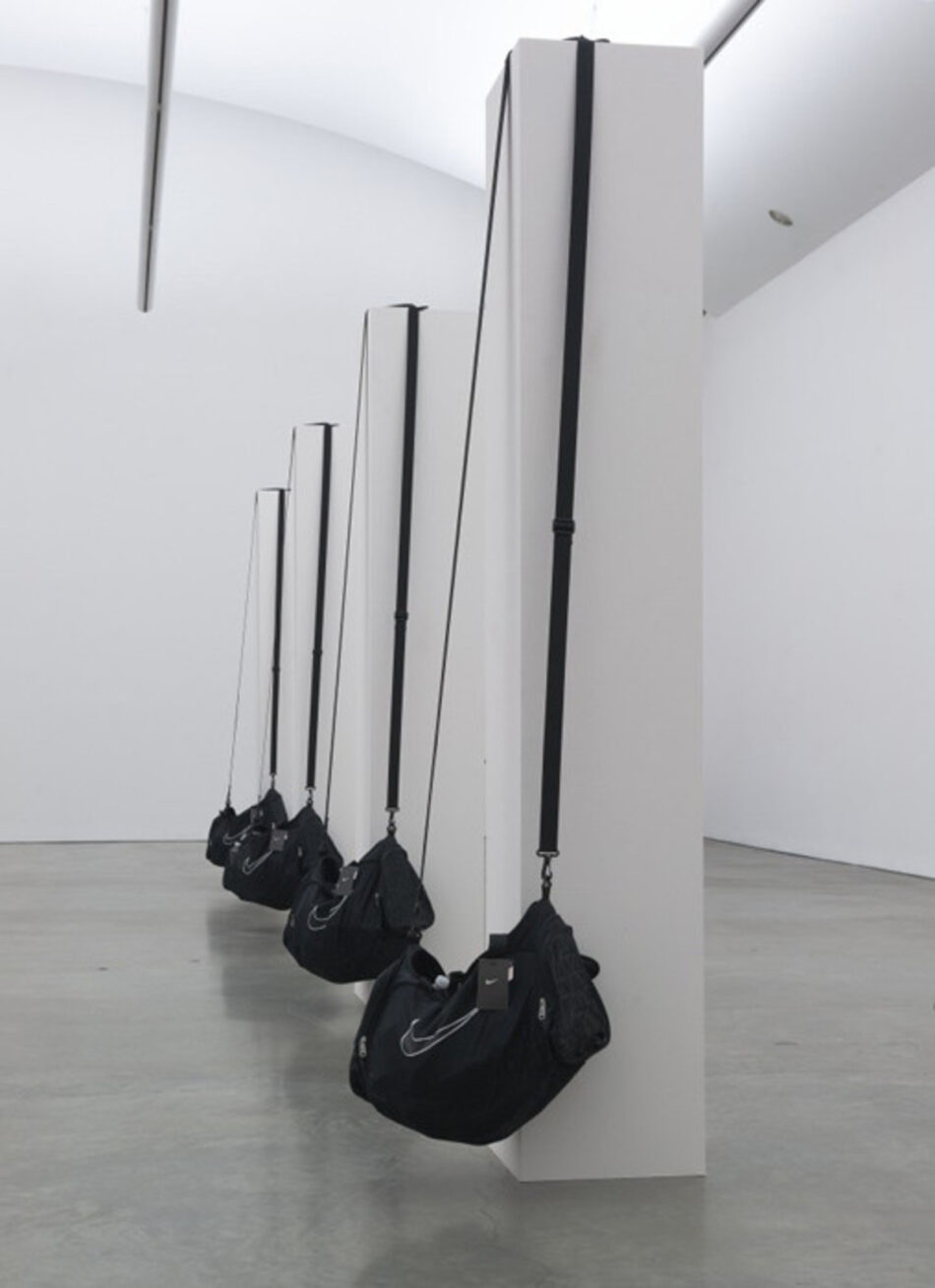Neuromancer Sport
The thing I like most about my Fitbit wristband is its texture.
The molded silicone rubber activity tracker is grippy, soft, and peripherally abject—a texture increasingly familiar among consumer-level technologies. Our world is full of vaporizers, keypads, remote controls, and iPhone cases sheathed in silicone skins that feel—pardon the vulgarity—like shark dick.
In 1986, the zenith of the science-fiction literary movement known as cyberpunk, Bruce Sterling edited a now-canonical anthology called Mirrorshades. In the preface, he wrote, “for the cyberpunks […], technology is visceral. It is not the bottled genie of remote Big Science boffins; it is pervasive, utterly intimate. Not outside us, but next to us. Under our skin; often, inside our minds.”
By the time Mirrorshades was published, technology had leap-frogged beyond the rarified circles of industry and academia to arrive at our front doors. The personal computing revolution brought it further into the hearth, igniting an era of concentrated, tactile contact between people and their tools that could never be defused, or diffused. “Eighties tech,” Sterling explained, undoubtedly surrounded by Walkmen, PCs, and newly portable telephones “sticks to the skin, responds to the touch.”
But we don’t just use tools; we bend them to our desires. The brilliance of cyberpunk was not just in its embrace of technology’s increased tactility—its speculations on new ways for hardware to ride the body—but in its imagination of a counterculture steeped in hybridity. William Gibson’s “console cowboys” led the charge: a parade of cybernetic beings, troubled artificial intelligences, and postindustrial bohemians with a “faintly hallucinatory sheen around the edges” of their “dirty chrome fittings,” as another of cyberpunk’s prophets, John Shirley, described.

Which brings us back to the Fitbit. It wouldn’t be entirely out of place in a cyberpunk novel. No chrome fittings, but its silicone skin is sensual enough to qualify as a kind of fetish material. Mine is black, without a visible logo. Inside its pellet-sized brain is a small accelerometer. I charge it via USB on my laptop, like a hard drive, synching my data in the process. My Fitbit relays an invisible metric of my existence—my thousands of daily steps—in mute blips of LED behind a pane of molded polycarbonate.
Last year, I pierced my Fitbit wristband with silver cone studs. Without knowing it, I was enacting a ritual gesture of “health goth”—a subcultural tendency for moody sportswear now well-documented by mainstream media, both as fashion moment and as a curious new branch in the phylogenetic tree of hipsterdom. Health goth has been posited in the press as an entry point to exercise for style-conscious millennials; I would argue it’s the inevitable downstream manifestation of cyberpunk’s failed aspirations. Instead of mirrorshades, health goths wear exquisite high-fashion sneakers and featherlight running jackets, festooned in proprietary reflective fabric. Health goth is a look without a literature.
A core element of the Fitbit’s marketing is an extensive social network—a “fitness community”—engineered to help users reach health and wellness goals. Cyberpunk dreamed of tech close to the skin, assuming this might allow for endless hybridity, continuous customization of the human organism; instead, our wearables suggest we match one another, step for step, calorie for calorie.
I’m not an athlete; I don’t even really exercise. And even though my Fitbit sticks to my skin, responds to my touch, it’s not really for me. I wear it every day for the same reason I layer reflective sports bras under my tank tops, follow two Nike Instagram accounts, and dress myself in ripstop nylon mesh and moisture-wicking rayon-polyester blends. I desire to hold close to my body the promises of science fiction made good by industrial chemists and sportswear brands: fitness, for better or for worse, is where the future went.
Claire L. Evans is a singer, writer, and artist based in Los Angeles. A science journalist and science-fiction critic, she is currently Futures Editor of Motherboard and editor of its sister science-fiction magazine, Terraform. She is the author of High Frontiers (2013) a collection of essays revolving around science, space, art, and the unknown.
